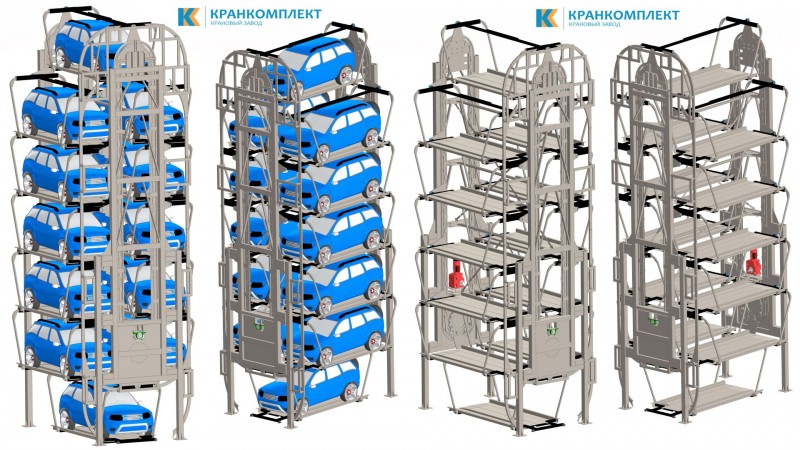
With the development of technology, the car ceased to be a luxury and turned into an everyday thing.
As the number of cars on the roads increases, the problem of a lack of parking becomes more actual, left cars on the drives ways cause great inconvenience to all drivers and often cause traffic jams and accidents.
The solution to this problem is the construction of rotary parking systems, which with the same occupied space allow you to park a way more cars.
In rotary parking, the car enters a mobile platform in the vehicle reception area and after the driver leaves the car, the parking is set in motion and the platform automatically moves up until the nearest free platform is in the reception area. When the car must leave the system, after determining the platform on which the required car is located, the parking is again set in motion and rotates until the platform with the desired car becomes accessible in the leaving area.
Historical note: The oldest mention of a mechanical parking system is the Rue de Ponthieu garage in Paris, created by architect Auguste Perret. The system was built in 1905 and transported vehicles to the first and second floor, where they were parked by maintenance stuff on both sides of the corridor.
In the 1920s, some parking systems were built throughout the United States in cities such as New York, Chicago, and Los Angeles.
That is, the idea of mechanical parking systems is far from new, but it has not been in demand for a century since the number of cars did not require additional parking spaces and standard ground and underground parking was more than enough.
But progress does not stand still and analyzing the latest trends in terms of increasing the efficiency of resource use, and the land is one of the most important resources, we can say with confidence that the future is rotary parking.